Scanning ultrasound-mediated memory and functional improvements do not require amyloid-β reduction
- PMID: 38499653
- PMCID: PMC11412907
- DOI: 10.1038/s41380-024-02509-5
Scanning ultrasound-mediated memory and functional improvements do not require amyloid-β reduction
Erratum in
-
Correction: Scanning ultrasound-mediated memory and functional improvements do not require amyloid-β reduction.Mol Psychiatry. 2024 Dec;29(12):3968-3970. doi: 10.1038/s41380-024-02616-3. Mol Psychiatry. 2024. PMID: 38834669 Free PMC article. No abstract available.
Abstract
A prevalent view in treating age-dependent disorders including Alzheimer's disease (AD) is that the underlying amyloid plaque pathology must be targeted for cognitive improvements. In contrast, we report here that repeated scanning ultrasound (SUS) treatment at 1 MHz frequency can ameliorate memory deficits in the APP23 mouse model of AD without reducing amyloid-β (Aβ) burden. Different from previous studies that had shown Aβ clearance as a consequence of blood-brain barrier (BBB) opening, here, the BBB was not opened as no microbubbles were used. Quantitative SWATH proteomics and functional magnetic resonance imaging revealed that ultrasound induced long-lasting functional changes that correlate with the improvement in memory. Intriguingly, the treatment was more effective at a higher frequency (1 MHz) than at a frequency within the range currently explored in clinical trials in AD patients (286 kHz). Together, our data suggest frequency-dependent bio-effects of ultrasound and a dissociation of cognitive improvement and Aβ clearance, with important implications for the design of trials for AD therapies.
© 2024. The Author(s).
Conflict of interest statement
The authors declare no competing interests.
Figures
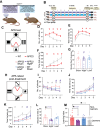
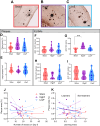
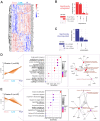
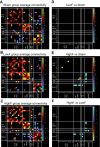
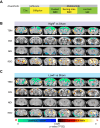
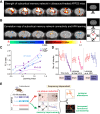
Similar articles
-
Falls prevention interventions for community-dwelling older adults: systematic review and meta-analysis of benefits, harms, and patient values and preferences.Syst Rev. 2024 Nov 26;13(1):289. doi: 10.1186/s13643-024-02681-3. Syst Rev. 2024. PMID: 39593159 Free PMC article.
-
Comparison of Two Modern Survival Prediction Tools, SORG-MLA and METSSS, in Patients With Symptomatic Long-bone Metastases Who Underwent Local Treatment With Surgery Followed by Radiotherapy and With Radiotherapy Alone.Clin Orthop Relat Res. 2024 Dec 1;482(12):2193-2208. doi: 10.1097/CORR.0000000000003185. Epub 2024 Jul 23. Clin Orthop Relat Res. 2024. PMID: 39051924
-
Depressing time: Waiting, melancholia, and the psychoanalytic practice of care.In: Kirtsoglou E, Simpson B, editors. The Time of Anthropology: Studies of Contemporary Chronopolitics. Abingdon: Routledge; 2020. Chapter 5. In: Kirtsoglou E, Simpson B, editors. The Time of Anthropology: Studies of Contemporary Chronopolitics. Abingdon: Routledge; 2020. Chapter 5. PMID: 36137063 Free Books & Documents. Review.
-
A multicomponent psychosocial intervention to reduce substance use by adolescents involved in the criminal justice system: the RISKIT-CJS RCT.Public Health Res (Southampt). 2023 Mar;11(3):1-77. doi: 10.3310/FKPY6814. Public Health Res (Southampt). 2023. PMID: 37254608
-
A systematic review of the efficacy and safety of anti-amyloid beta monoclonal antibodies in treatment of Alzheimer's disease.Expert Opin Biol Ther. 2024 Nov;24(11):1261-1269. doi: 10.1080/14712598.2024.2416947. Epub 2024 Nov 12. Expert Opin Biol Ther. 2024. PMID: 39432414 Review.
References
-
- Goedert M, Spillantini MG. A century of Alzheimer’s disease. Science. 2006;314:777–81. - PubMed
-
- Jack CR Jr. Advances in Alzheimer’s disease research over the past two decades. Lancet Neurol. 2022;21:866–9. - PubMed
-
- Padmanabhan P, Götz J. Clinical relevance of animal models in aging-related dementia research. Nat Aging. 2023;3:481–93. - PubMed
-
- Blackmore DG, Razansky D, Götz J. Ultrasound as a versatile tool for short- and long-term improvement and monitoring of brain function. Neuron. 2023;111:1174–90. - PubMed
MeSH terms
Substances
Grants and funding
- GNT1176326/Department of Health | National Health and Medical Research Council (NHMRC)
- GNT1145580/Department of Health | National Health and Medical Research Council (NHMRC)
- GA39196/Department of Health | National Health and Medical Research Council (NHMRC)
- 22-AAIIA-965230/Alzheimer's Association
LinkOut - more resources
Full Text Sources
Medical

